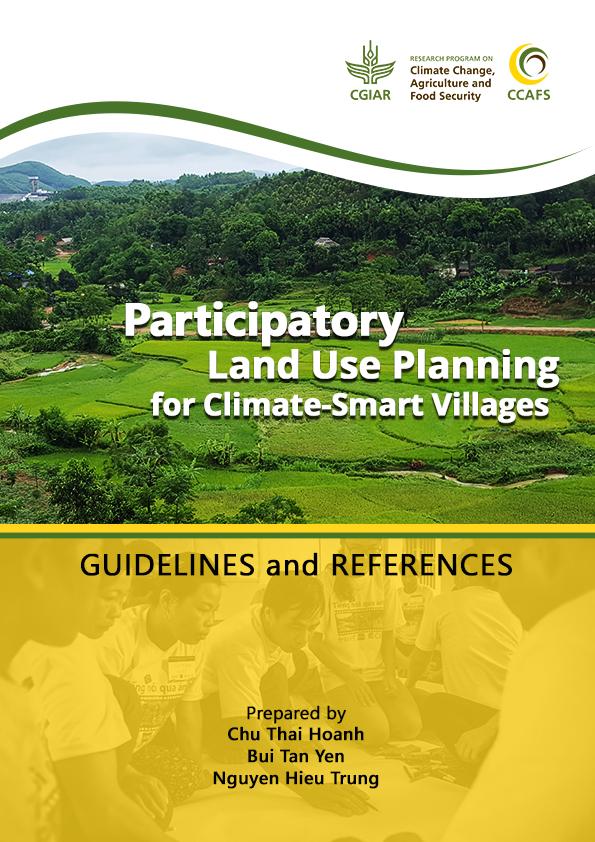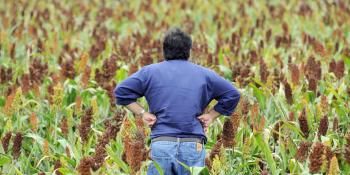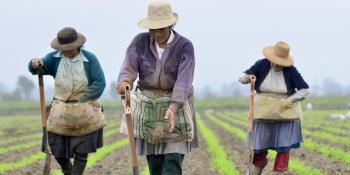A participatory approach to empower the community
Guidelines for implementing land-use plans were developed to identify better uses of land and water resources that will address community needs in the long term.
Participatory land-use planning (PLUP) refers to a bottom-up method of analyzing land and water resources. In its current form, PLUP integrates inputs about climate change and sea level rise to help communities sustainbly utilize the resources in their vicinities. Through sustainable resource use, a community can improve its members' livelihoods while also ensuring that the resources are maintained for the benefit of future generations.
Chu Thai Hoanh of the International Water Management Institute recently developed new guidelines for implementing PLUP in the context of climate-smart adaptation in Climate-Smart Villages (CSVs), titled Guidelines on Participatory Land Use Planning in Climate-Smart Villages. Bui Tan Yen of the CGIAR Research Program on Climate Change, Agriculture and Food Security in Southeast Asia (CCAFS SEA) and Nguyen Hieu Trung of Can Tho University, Vietnam contributed to writing the Guidelines. The Guidelines were finalized with the help of participants during the Training Workshop on Participatory Land Use Planning in Climate-Smart Villages held in Bac Lieu, Vietnam from 18-21 August 2015.
Empowered communities, sustainable resources
In implementing PLUP, community members participate in decision-making processes. Specifically, they have a role in deciding what should be done on their own lands. Consultations are conducted throughout PLUP implementation to ensure community participation. Experts outside the community provide technical and extension support.
Inputs from the community are considered valuable as they can help to shape guidelines that fit the community's current situation and needs. The success, then, of PLUP implementation largely depends on the working relationship between the community and the institutions that introduced PLUP.
PLUP with climate change adaptation (PLUP-CC) is an integral step in PLUP implementation. In this step, potential issues in the CSV related to climate change and sea level rise are discussed with the community. Changes in land qualities, which occur as a result of such issues, are also identified. Likewise, a participatory monitoring and evaluation phase ensures that the PLUP continues to be relevant to the situation and needs of the community.
In essence, PLUP is a continual process designed to keep pace with the changes in communities. It is, as emphasized in the Guidelines, “not a one-time exercise of drafting a land-use plan.” Aside from matching the PLUP with the changes in the community, it must also be aligned with land-use plans at higher management levels, i.e., in the district, province, and region. This also helps CSVs adhere to the existing laws and regulations in the country.
Step-by-step process
The Guidelines list six steps for implementing PLUP. For each step, the rationale, process, and possible methods and tools are presented.
In general, PLUP implementation involves establishing a dedicated PLUP team that will work with the community. Relevant information on agro-ecosystem zones (AEZs) and the land units (LUs) and land use types (LUTs) within these zones need to be gathered. This information should then be organized in maps and tables to give the PLUP teams and community members a clear view of the current situation in a CSV. This serves to inform them of potential issues that may influence land use in the future, helping the community to adapt accordingly. It can also help not only the PLUP team but also government officials to match the PLUP with existing laws and regulations in the country. Afterwards, the PLUP-CC developed should be documented in a report to serve as a guide for the next rounds of PLUP.
The Guidelines also highlight the importance of participatory monitoring and evaluation in PLUP implementation. This helps to ensure that the PLUP continues to meet the needs of the community.
Download the publication: Hoanh CT, Yen BT, Trung NH. 2018. Participatory Land Use Planning for Climate-Smart Villages: Guidelines and References. Wageningen, the Netherlands: CGIAR Research Program on Climate Change, Agriculture and Food Security (CCAFS).
Read more:
- News update: Participatory vulnerability assessment towards effective climate-smart agriculture intervention
- News update: An integrated system for real-time monitoring of rice production and climate risks
- Blog: Getting the message across: Communicating sustainable farming practices to improve adoption in Vietnam
Renz Louie Celeridad is the Junior Communications Specialist for the World Agroforestry Centre Philippines. He also works as a Communications Consultant for CCAFS SEA.




